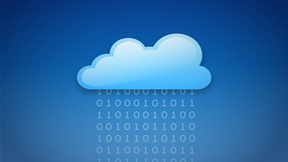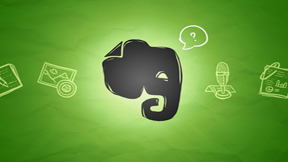|
|
Email Etiquette for a Busy World

How many email messages do you send every day? If like most of us, dozens, perhaps scores of them. Now, are you doing anything to make the recipients of your email angry?
There’s actually quite a lot of subtle (and not so subtle) etiquette involved in sending email messages. And if you don’t want to tick off your recipients, you would do well to master these tips for practicing good email manners.
Brevity can be off-putting
How many times have you received an extremely brief email message? It’s easy to think that the sender is angry with you for some reason.
But what if the sender was sending the message through an iPhone or iPad? It’s not always easy to type on small mobile devices. And for that reason, many of us keep our messages short when typing on those annoyingly constraining pop-up keyboards.
To let recipients know that this is the reason for your brevity, create a specific signature for any email accounts that you use on smartphones and tablets. According to the website Mashable, this signature should tell people that you’re emailing from a mobile device, and that’s why your message is so short. Something like “Excuse my brevity; I’m typing this on my iPhone” should do the trick.
Always reply
CBS News reminds you to always reply when you receive an email message. Our inboxes are often flooded with emails. It can seem like a challenge to respond to them all. But ignoring an email message is rude, CBS News says, and can turn people off. CBS News suggests that sometimes a simple “Thanks” is all that senders need to feel confident that you’ve received and are considering their message.
Be careful
CBS News also wisely recommends that you take the time to actually proofread your email messages before sending them. It’s tempting to quickly dash off a message and hit “send.” Doing so, though, can leave you with a message that’s filled with typos—which can make you look silly and/or unprofessional. Worse yet, you might forget to include an important attachment. Don’t rush. It’s not the end of the world if your email contains imperfections, but it’s smart and polite to make sure that you are sending out a professional email message.
Be polite and don’t shout
PR firm Ragan recommends that you remember your basic offline manners when composing email messages. This means including those magic words in your messages, “please” and “thank you.” Too often, in the rush of composing and sending emails, we forget these niceties. Ragan also warns against shouting in your email messages. To those who don’t know, “shouting” means TYPING IN ALL CAPITAL LETTERS. This looks incredibly annoying on the computer screen.
Top ↑
|
5 Tips for Better Digital Productivity

Five Quick and Easy Ways to Boost Your Digital Productivity
You spend long hours in front of your computer screen, whether you’re working for yourself or for your employer. It takes time to run your own business or to stand out when you’re working for someone else. Why not, then, use that time in front of your screens as productively as possible?
Here are five tips, carefully selected from a several reliable online resources, that will make your days as productive as they are busy.
No more than nine browser tabs
Lifehacker starts with this piece of simple, but important, advice: Never keep more than nine browser tabs open at one time. Why not? Because the more browser tabs you keep open at one time, the slower your browser will run, even the best of them. And a slow browser is a big waste of time. Remember, time is ticking away while you wait for those search results that never seem to pop up. Besides, it’s not like you can see what’s in all those tabs anyway.
Tap into the power of Evernote
There are plenty of note-taking programs available today. But Evernote is one of the best. It’s an incredibly intuitive way to keep track of files, photos, videos, notes and Web clips. But want to become truly productive? Install Evernote on all of your devices — your smartphone, tablet, laptop and desktop. Then use it to get ultra-organized. Michael Hyatt, a leadership expert, on his website extols the virtues of Evernote, and writes about how important it is to collect and stack notes. For instance, you might take notes from a work meeting. Those notes are collected in an Evernote notebook. You can then file that notebook in a stack devoted solely to work. That way, it’s easy to find your notes when you need them.
Make Windows easier to use
Windows is ubiquitous. It’s also a bit clunky at times. Fortunately, Microsoft provides plenty of tips for customizing Windows so that it works better for you. For instance, you can tag a folder, saved search or even a drive as a favorite in Windows 7. Simply drag your favorite to the Favorites section in the navigation pane. Now you can easily click on these favorites. You can also pin favorite applications and files to your Windows 7 taskbar so that you can open them easily from any window whenever you want. If a favorite program is already running, right-click on its button on the taskbar to open its Jump List. Then select the “Pin this program to taskbar” option. If the program isn’t running, click “Start,” find the program’s icon, right-click on that icon and then select “Pin to taskbar.”
Full-screen mode
Do you find yourself constantly distracted by other tabs and buttons on your computer? Block those by working in full-screen mode. This is also a great idea if you are viewing photos or videos. To turn on full-screen, open a photo or video clip in Windows Media Player. If you’re using Windows 7 or Windows XP, click the F11 key on your keyboard. Your video or photo will jump to its largest size, eliminating the title bar and taskbar while doing so. When you want to exit full-screen mode, press the Escape key on your keyboard.
No more alerts
Does it annoy you when Microsoft Outlook pops a Desktop Alert on your desktop when you receive a new email message? It can certainly be distracting. That’s why, if you want to be truly productive, you need to turn those alerts off. Do so by clicking on the “File” tab and then “Options.” Next, click “Mail.” Under the heading “Message arrival” clear the check mark next to “Display a Desktop Alert.” Now you won’t have to worry about those distracting messages keeping you from your work.
Top ↑
|
Can You Identify the Bandwidth Hogs in Your Office?

Your office Internet is suddenly sluggish. Web pages are popping onto screens one image at a time. It takes 30 seconds to open an email message. And viewing lengthy PDF documents? That’s becoming an all-morning affair.
What’s wrong?
Bandwidth hogs might be to blame. As a recent story by InformationWeek says, certain applications tend to suck up more than their fair share of bandwidth. If too many employees are accessing these usage hogs at one time, it could dramatically slow down your computers and send your workers’ productivity plummeting. Here, then, is a closer look at the biggest bandwidth hogs, as presented by InformationWeek.
Culprit: Video
Video easily tops the list of bandwidth hogs. As InformationWeek reports, a growing number of services deliver video online, everything from Netflix to Hulu to Amazon. These services are by far the biggest consumers of bandwidth. And, as InformationWeek reports, there’s an added insult here: Many employees who are streaming or downloading video are entertaining themselves on company time. It’s why many small businesses limit employee access to streaming video sites such as YouTube or Netflix.
Culprit: Music
It’s true that audio requires just a small amount of bandwidth when compared to video. But as the InformationWeek story says, the bandwidth that music-streaming services consume can add up. That’s because many employees leave their music sites running during most of the day. Many services allow employees to store their entire music collection in the cloud. That can add up to significant bandwidth when employees stream their songs back from the cloud.
Culprit: Email
How full is your email inbox? Now imagine the email inboxes of all your small business’ employees. All those messages can add up to consume bandwidth. This is why it is so important for companies to encourage their employees to delete unneeded email messages on a regular basis. It’s why many small businesses place a storage limit on their employees’ email folders.
Read more at: InformationWeek
Top ↑
|
Understanding the Cult of Evernote

How to Explain the Cult of Evernote?
Can a cult grow around an organization app? If it’s Evernote, the five-year-old note-taking and organization application that’s growing at an amazing speed, the answer is a definite “yes.”
Evernote has attracted a growing base of devoted fans, fans willing to spread the word about this application for free, fans that would never think of using any other note-taking software, according to an interesting feature recently run by Bloomberg Businessweek.
Booming popularity
How popular is Evernote? Evernote reports that it boasts 50 million users around the globe. The company also says that it is adding 100,000 users each day, a rather impressive figure. And this is only the start. The Bloomberg Businessweek story quotes Evernote chief executive officer Phil Libin as saying that he’d like to reach 1 billion users.
Why so hot?
But why is Evernote so hot? It might be due to its simplicity, and the way it helps increasingly cluttered brains keep track of appointments, deadlines, meetings and chores.
Basically, users type, clip or upload a note—which can be anything from an image or a recording to a word document to web page—into Evernote’s right-hand column. They then store that note in a notebook listed on Evernote’s left-hand side. Finally, users can browse or search their notes in a middle column.
The promise of Evernote is enticing: If you use it, you’ll never forget your spouse’s birthday, that afternoon phone call or your daughter’s soccer practice again.
Changing lifestyles?
Libin says that he doesn’t understand the concept of work/life balance. For home, work is part of life, and something that he enjoys doing. It’s why he admits to checking email messages late into the evening.
Evernote takes advantage of this changing view of the world, one embraced by not just Libin. A growing number of consumers work on the fly, scheduling meetings and interviews around the clock. An organizing program like Evernote is the perfect fit for this lifestyle. And that just might explain why the app has become so popular so quickly.
Read more at: Businessweek
Top ↑
|
Your Small Business Can Write Off More Tech Spending in 2013

It’s not easy to run a successful small business today. You’re faced with escalating costs, sometimes unreliable employees, and competition from name-brand businesses with far deeper pockets. But at least your small business can take advantage of larger tax breaks for investing in new technology. BizTech Magazine recently covered how new tax breaks created through the American Taxpayer Relief Act of 2012 can help your business boost its technology while paying less for it.
The tax break
According to the BizTechMagazine story, the Taxpayer Relief Act gives small businesses the ability to write off up to $500,000 in new technology and equipment purchases in 2013. That’s significant, and can provide small business owners with the financial ability to upgrade their computer equipment, modernize their payroll software, invest in new forecasting tools and even boost their social media presence. In other words, the tax break can give small business owners their best chance at competing in today’s tough marketplace.
Retroactive
The tax relief act provides even more benefits to small business owners. According to the BizTech story, says that the new law also retroactively ups the amount that businesses can deduct for equipment purchases made in 2012. This amount will be jumping significantly from $139,000 to $500,000. This retroactive move allows business owners to write off more of new tech or equipment purchases that they’ve already made.
An important boost
It’s important for small business owners to take advantage of these tax breaks. They are, after all, important financial incentives designed to encourage business owners to invest in the technology they need to thrive. Businesses must constantly evolve if they want to succeed today. One of the best ways to do this is to invest in new technology and equipment, and the taxpayer relief act makes doing this less costly.
Read more at: BizTech Magazine
Top ↑
|
|






Leave a Reply
Want to join the discussion?Feel free to contribute!